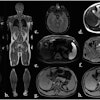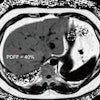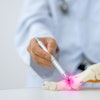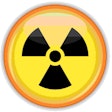
We all want to be able to quickly and accurately predict troublesome patients. By this, I mean that with a mere glance you just know that a patient is either moments from death or, alternatively, that they are about to steal your mobile phone.
 Dr. Paul McCoubrie is a consultant radiologist at Southmead Hospital in Bristol, U.K.
Dr. Paul McCoubrie is a consultant radiologist at Southmead Hospital in Bristol, U.K.
European radiologists are neither effete nor squeamish, but they do come to enjoy vaguely compliant and, well, alive patients. Few revel in the undignified business of resuscitating those who have impolitely attempted to die in the department. At any rate, it is an Official Good Thing to spot trouble early nowadays. We are exhorted to call in the cavalry before rather than after.
This distinctly useful prognostic ability is part innate sixth sense but mainly derived from years of experience. Well, there is fresh and encouraging news from the latest edition of the apocryphal Journal of Anecdote-Based Medicine. I can reveal evidence-free clinical tips and hints to aid readers detect peril in quiescence.
O-sign
We all learnt this at medical school -- the obtunded patient with mouth wide open has a singularly poor prognosis. The severity of halitosis can be stomach-churningly unbelievable but only correlates with quality of nursing care, not prognosis. Lesser known variants have been described; the Q-sign or T-sign, where the tongue protrudes at a disturbing 45° or 90° angle.
There is also the rarer dotted-O sign where perioral food debris, cracked skin, or even insects are present. Such patients should be turned around at the main entrance to the department and sent back. It has been shown that if such patients are exposed to even a quantum of ionizing radiation, they suffer immediate and invariably fatal cardiorespiratory arrest.
Age
In case after case after case (n = 3), trouble has been shown to peak around the 7th decade. Octa- and nonagenarians are usually too frail to mount a serious assault. Moreover, their body cavities rarely contain enough material to make a serious mess when evacuated. Most of us have seen a delirious 75-year-old nearly overcome three security guards, then dramatically and gloriously redecorate the ward with the contents of their gastrointestinal or endovascular systems.
Hodge's sign
Dr. John Hodge (also famous for writing Shallow Grave and A Life Less Ordinary) told me proudly of his eponymous sign. This refers to the presence of tucked-in tissues or hankies, occurring almost exclusively in elderly ladies. Usually this is unilateral (up the sleeve), bilateral (both sleeves), or even occult (bra, knickers). The worse category is fulminant subtype, where the patient's clothing is festooned with multiple hidden hankies. The number of hankies and degree of concealment are both directly proportional to degree of dementia. Beware such patients, as strongly Hodge's positive patients have a spectacular inability to stay still during scans.
Glasgow Scumbag Index
Multiply the number of facial piercings by number of obscenities in their first sentence. A score of ≥ 5 indicates an unsavory individual who errs towards the uncooperative.
Bristol Scrote Scale
This is a simple tattoo: tooth ratio, but with allowable modifiers. Largely black or dark brown teeth count as half, but self-drawn tattoos count double. A ratio of more than one strongly predicts antisocial behavior. Interestingly, the higher the number, the greater is the life-threatening organ dysfunction that can be tolerated. Those with a ratio of more than 1.5 see massive bacteremia as a valuable source of protein.
Law of tubes
The number of medical tubes inserted into a patient is proportional to their ability to create medical havoc. This can be estimated using the equation T = A x (T/2), where T = probability of trouble, A = age, and T = number of tubes. Patients older than 40 who have five or more lines, catheters, or tubes are 100% guaranteed to have a medical emergency whilst in the department. Strongly consider refusing to see them until at least one tube has been removed.
So if your next patient is a robust-looking but edentulous and tattooed septuagenarian sprouting tubes and hankies like an iatrogenic cotton plant, then consider what you have just read; call security, get a junior radiologist to scan them, and run away.
Dr. Paul McCoubrie is a consultant radiologist at Southmead Hospital in Bristol, U.K.
The comments and observations expressed herein do not necessarily reflect the opinions of AuntMinnieEurope.com, nor should they be construed as an endorsement or admonishment of any particular vendor, analyst, industry consultant, or consulting group.



















